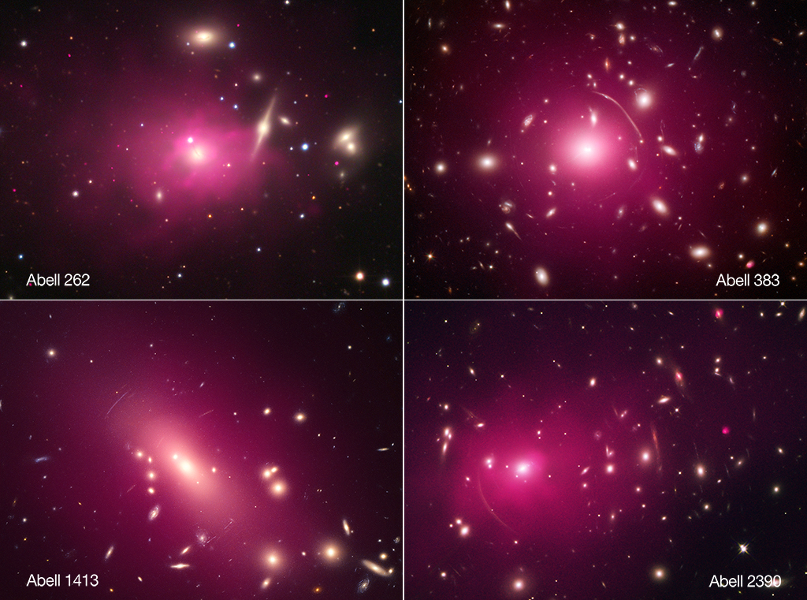
 Credit: X-ray: NASA/CXC/Cinestav/T.Bernal et al.; Optical: Adam Block/Mt. Lemmon SkyCenter/U. Arizona
Credit: X-ray: NASA/CXC/Cinestav/T.Bernal et al.; Optical: Adam Block/Mt. Lemmon SkyCenter/U. Arizona
Another Form of Dark Matter?
Dark matter is the unknown material that dominates the gravity and creates the structure of the Universe that we currently see. Astronomers have shown that there's about five times more dark matter in the Universe than the normal matter we're familiar with. Although it's difficult to directly detect dark matter, we can see the effects of this stuff on the motions of stars in galaxies, and in the overall structure of the Universe, and by the way it's imprinted itself on the relic microwave radiation left behind by the Big Bang. Cosmological data suggests that the best description of dark matter is provided by so-called "Cold Dark Matter" models in which the dark matter is made up of massive particles (weakly interacting massive particles, or "WIMPS") that are "cold" (i.e. they move relatively slowly, with speeds less than the speed of light) and which produce no detectable electromagnetic radiation. Although these CDM models do a good job explaining the fluctuations seen in the microwave background produced by the Big Bang, there are issues with the predictions of CDM models when compared to structure seen in the (relatively) local Universe. One issue is that the distribution of matter in clusters of galaxies is much smoother than CDM models predict. Astronomers have also considered other models of dark matter. One in particular posits that dark matter is composed of particles having a tiny mass, about ten thousand trillion trillion times less than the mass of the electron. These models are called "Scalar Field Dark Matter" models, sometimes called "fuzzy dark matter" models, since they predict that the observed distribution of matter in galaxy clusters should be much more spread out. Astronomers have now attempted to test this class of dark matter models by looking at the hot, X-ray emitting gas that dominates the normal matter content of galaxy clusters, using X-ray images from the Chandra X-ray Observatory. Four of these images are shown above, with the X-ray data in purple superimposed on optical images of the galaxies which are members of the cluster. This detailed study showed that, for a baker's dozen of galaxy clusters analyzed, the SFDM models did a better job in matching the mass distributions of the galaxy clusters studied.
Published: May 8, 2017
<
HEA Dictionary ● Archive
● Search HEAPOW
● Other Languages
● HEAPOW on Facebook
● Download all Images
● Education ● HEAD
>

Each week the HEASARC
brings you new, exciting and beautiful images from X-ray and Gamma ray
astronomy. Check back each week and be sure to check out the HEAPOW archive!
Page Author: Dr. Michael F. Corcoran
Last modified Monday, 26-Feb-2024 17:36:40 EST


